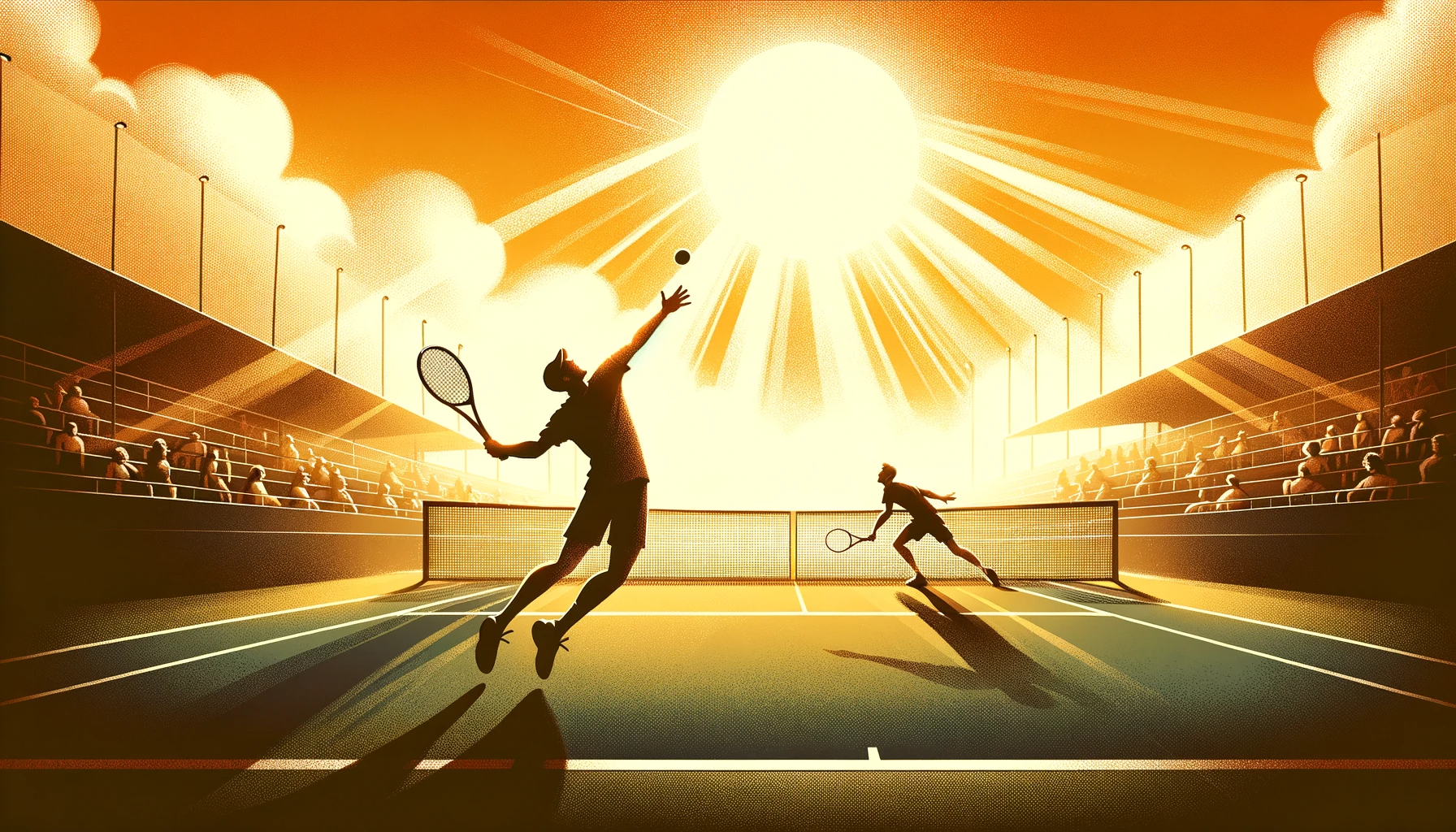In the fast-paced world of tennis, mastering the basics is crucial for any aspiring teen player. This comprehensive guide aims to equip young athletes with the essential techniques and strategies needed to excel on the court.
From perfecting grip techniques to honing footwork fundamentals, this article will delve into every aspect of the game. Whether you’re a beginner or looking to elevate your skills, this go-to tennis guide will provide invaluable insights and expertise to help you reach your full potential.
Key Takeaways
- Grip techniques are important in tennis and include Eastern, Continental, Semi-Western, and Western grips.
- Proper footwork is crucial for agility, power, and accuracy in tennis.
- Mastering the serve is essential for success in tennis, focusing on technique, serving under pressure, and targeting specific areas of the opponent’s court.
- Perfecting groundstrokes involves shot selection, developing power, proper footwork, and consistency.
Grip Techniques
When learning tennis, it is crucial for teens to familiarize themselves with proper grip techniques. A proper racket grip is essential for control, power, and accuracy in their shots. There are variations of grip techniques that players can employ depending on the type of shot they intend to execute.
The most common grip technique used in tennis is the Eastern grip. This grip involves placing the base knuckle of the index finger on the third bevel of the racket handle. It provides a balanced grip and is suitable for all types of shots.
Another popular grip is the Continental grip, where the base knuckle of the index finger is placed on the second bevel. This grip is commonly used for volleys and serves, as it allows for better control and maneuverability.
For more specialized shots, players may opt for the Semi-Western or Western grip. The Semi-Western grip involves placing the base knuckle of the index finger between the third and fourth bevels, while the Western grip positions it closer to the fifth bevel. These grips are ideal for generating topspin and are commonly used for groundstrokes.
Mastering these grip techniques is essential for any aspiring tennis player. By understanding and practicing them, teens can establish a solid foundation for their game. With a proper grip, they can now transition into the subsequent section about ‘footwork fundamentals’ to further enhance their tennis skills.
Footwork Fundamentals
To develop a strong foundation in tennis, it is essential for teens to master the fundamentals of footwork. Proper footwork is crucial for players to move efficiently around the court, maintain balance, and execute shots effectively. Here are some key aspects to focus on when it comes to footwork fundamentals:
- Agility training: Agility is the ability to change direction quickly and efficiently. Incorporating agility drills into training sessions can improve footwork by enhancing speed, reaction time, and coordination.
- Importance of proper footwork: Good footwork allows players to get into the right position to hit the ball, enabling them to generate power and accuracy. It also helps in recovering quickly after each shot and getting into position for the next one.
- Balance and weight transfer: Maintaining proper balance while moving is crucial in tennis. Players should learn to transfer their weight effectively from one foot to another, allowing for smoother and more controlled movements.
- Split-step: The split-step is a crucial component of footwork in tennis. It involves a small hop just before the opponent makes contact with the ball, helping players anticipate the direction of the shot and react quickly.
Mastering the Serve
The serve is a pivotal stroke in tennis that requires precision and technique. It is the shot that initiates each point and sets the tone for the rest of the game. Mastering the serve is essential for any tennis player looking to excel on the court.
To develop effective serve tactics, players must first focus on their technique. The serve starts with a proper grip, followed by a smooth and fluid motion. Players should aim to generate power from their legs and transfer it through their core, arm, and racket. It is important to maintain a relaxed and loose grip, allowing for maximum racket head speed at contact.
Serving under pressure can be challenging, but with practice, it can become a strength. One key element is maintaining a consistent routine before each serve. This helps to calm nerves and establish a rhythm. Additionally, visualizing successful serves and focusing on positive outcomes can help mitigate pressure.
Another tactic that can be useful is targeting specific areas of the opponent’s court. By strategically placing serves, players can exploit weaknesses and gain an advantage in the game. This requires keen observation and adaptability during the match.
Mastering the serve takes time and dedication. By focusing on technique, developing effective serve tactics, and learning to serve under pressure, players can elevate their game and become formidable opponents on the tennis court.
Perfecting Groundstrokes
Continuing from mastering the serve, an essential aspect of tennis for teens is perfecting their groundstrokes. Groundstrokes involve hitting the ball after it bounces on the court, and they are crucial for maintaining control and dictating the flow of the game.
To perfect their groundstrokes, teens should focus on the following:
- Shot selection: Understanding when to use a forehand or backhand stroke is essential. Teens should analyze the situation, consider their positioning, and anticipate their opponent’s shot to make the right decision.
- Developing power: Groundstrokes require power to generate enough force to propel the ball over the net and into the opponent’s court. Teens should work on building strength in their core, legs, and arms to generate more power in their strokes.
- Proper footwork: Footwork is key to executing groundstrokes effectively. Teens should practice moving quickly and efficiently to position themselves correctly and maintain balance while hitting the ball.
- Consistency: Consistency is vital to winning matches. Teens should focus on developing a consistent technique that allows them to hit the ball consistently over the net and within the boundaries of the court.
Strategies for Match Play
One key strategy for teens in match play is to analyze their opponent’s weaknesses and exploit them. In order to do this effectively, it is important to develop mental game strategies and practice effective shot selection.
When it comes to the mental game, it’s crucial for teens to stay focused and maintain a positive mindset throughout the match. This can be achieved by setting small, achievable goals, staying in the present moment, and managing emotions. By staying mentally strong, players can make better decisions and adapt their game plan accordingly.
Effective shot selection is another vital aspect of match play strategy. This involves choosing the right shot based on the situation, such as the position of the opponent, court surface, and game score. Teens should aim to mix up their shots, taking advantage of their opponent’s weaknesses and playing to their own strengths. This could mean using different shots like topspin, slice, or drop shots, to keep their opponent off balance and create opportunities to win points.
Frequently Asked Questions
How Do I Choose the Right Tennis Racket for My Playing Style and Skill Level?
Choosing the right tennis racket is crucial for optimal performance. Consider factors such as weight and grip size to ensure comfort and control. Additionally, choose the right string tension and material to enhance power and feel on the court.
What Are Some Common Mistakes to Avoid When Hitting Groundstrokes?
When hitting groundstrokes in tennis, it’s important to avoid common mistakes related to grip and footwork. Proper grip ensures control and power, while good footwork helps with balance and positioning for effective shots.
How Can I Improve My Speed and Agility on the Tennis Court?
To improve speed and agility on the tennis court, incorporating speed training drills and agility ladder exercises can be highly beneficial. These exercises help to enhance footwork, reaction time, and overall court movement, allowing players to be more agile and swift during gameplay.
What Are Some Effective Strategies for Playing Against Left-Handed Opponents?
When playing against left-handed opponents, it is essential to adapt your strategy to their unique challenges. This can include focusing on their weaker side, utilizing cross-court shots, and adjusting your positioning on the court.
Are There Any Specific Warm-Up Exercises or Stretches That Can Help Prevent Tennis Injuries?
To prevent tennis injuries, it is crucial to incorporate proper warm-up exercises and stretches into your routine. These activities help to prepare the body for the demands of the sport and increase flexibility, reducing the risk of strains, sprains, and other common injuries.
Conclusion
In conclusion, mastering the basics of tennis is essential for any teenager looking to improve their game. By learning proper grip techniques, footwork fundamentals, and strategies for match play, teens can enhance their skills on the court.
One interesting statistic to note is that 82% of professional tennis players started playing the sport in their teenage years, highlighting the importance of starting early and dedicating oneself to practice.
So, with determination and practice, teenagers can excel in the world of tennis.








No Comment! Be the first one.